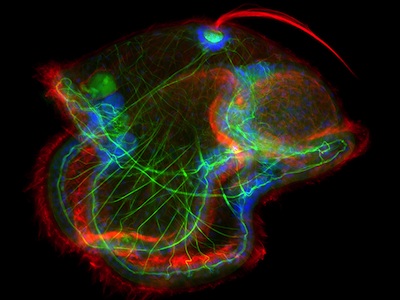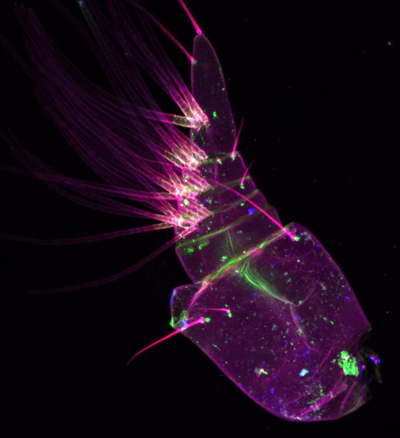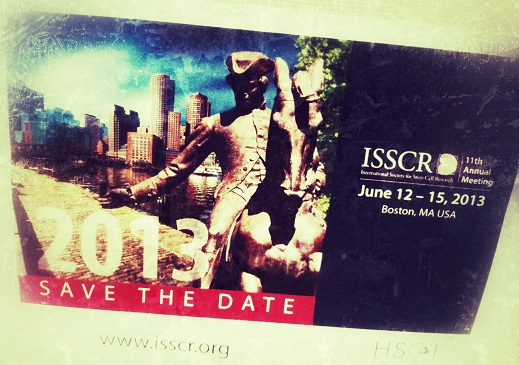Hope Beyond Hype: A graphic story of stem cells from discovery to therapy
Posted by jbarfoot, on 22 June 2012

“The strangest discoveries can end up saving lives… like the discovery that skin could be grown in a dish”; so starts an inventive 16 page graphic story that tells a story of stem cells from lab bench discoveries to working therapy. The graphic story, Hope Beyond Hype, grew from the desire of OptiStem, a large European consortium of stem cell researchers, to go beyond just explaining the science of stem cells. They wanted to depict the process they undertake as they try to move stem cell research on towards clinical trials and therapies.
An innovative resource produced by OptiStem
OptiStem (www.optistem.org) is a pan-European stem cell research project funded by the European Commission under FP7. It brings together scientists, companies and clinicians from 18 institutions across six countries. During the course of the five year Optistem project members will carry out four different clinical trials concerning muscular dystrophy, severe corneal injury in the eye and severe damage to the oral mucosa (inside of mouth). The OptiStem consortium wanted to develop this resource because they view it as very important that scientists engage with the public and patients about the process of developing new therapies, and that scientists and regulators also engage.
Science fact not fiction
Hope Beyond Hype starts with the true life story of two badly burned boys being treated with stem cell generated skin grafts in 1983. We then follow the successes and setbacks of a group of researchers working together to use stem cells to cure blindness, whilst being introduced to knotty issues that are part of the process, including stem cell regulation and the controversial ethical issues surrounding the subject. Whilst some of the story lines sound like science fiction they are in fact all true, despite the fact the script was written by the well-known Scottish Science Fiction writer, Ken Macleod. Comic book artist Edward Ross illustrated the script with his clear, friendly and attractive artwork, whilst stem cell researchers from OptiStem provided the real-life examples of their research and experiences.
“As a science fiction writer I’m naturally interested in science, and I see engaging with real science as important to science fiction. I’m proud to have been able to contribute to this graphic story, which explains a vital new field of medicine and introduces complex issues of science policy in a clear, straightforward, and entertaining way.”
Ken Macleod, Writer
An interactive, multilingual comic
Intrigued? Hope Beyond Hype was launched online at www.eurostemcell.org/hopebeyondhype on International Clinical Trials Day, 18th May 2012 and since then over 100,000 people have viewed the graphic story online! Readers will also be able to explore the scientific process portrayed in the comic in more depth using the soon to be launched interactive version of the graphic story. To reach the European community represented by OptiStem the resource will soon be available in French, German, Italian and Spanish.
“Not a day goes by without news of the promise the science of stem cells brings. In reality, the process of developing early research promise into actual therapy is a very long and complex one. At OptiStem, we wanted to help people engage with the real-life process in a scientifically accurate way. Our aspiration is that Hope beyond Hype will be read and discussed by a broad range of people including patients, carers, teachers, patient advocacy groups, regulators and policy-makers.”
Professor Clare Blackburn, MRC Centre for Regenerative Medicine and OptiStem
Notes:
- OptiStem is a pan-European stem cell research project funded by the European Commission under FP7. For further information visit www.optistem.org.
- Hope Beyond Hype can be found at www.eurostemcell.org/hopebeyondhype.
- EuroStemCell is European Commission-funded initiative which aims to disseminate reliable and good quality information and resources on stem cells. OptiStem and EuroStemCell work together closely to engage the public with the research of the OptiStem consortium. www.eurostemcell.org.
- The MRC Centre for Regenerative Medicine is a world leading research centre based at The University of Edinburgh. Scientists and clinicians study stem cells, disease and tissue repair to advance human health. The centre’s research is aimed at developing new treatments for major diseases including cancer, heart disease, diabetes, degenerative diseases such as multiple sclerosis and Parkinson’s disease, and liver failure. See also www.crm.ed.ac.uk.
- Edward Ross is a comic book artist based in Scotland. www.edwardross.co.uk.
- Ken Macleod is an acclaimed and award-winning Scottish science fiction writer based in Scotland. http://kenmacleod.blogspot.co.uk.


 (1 votes)
(1 votes)
 (No Ratings Yet)
(No Ratings Yet)


